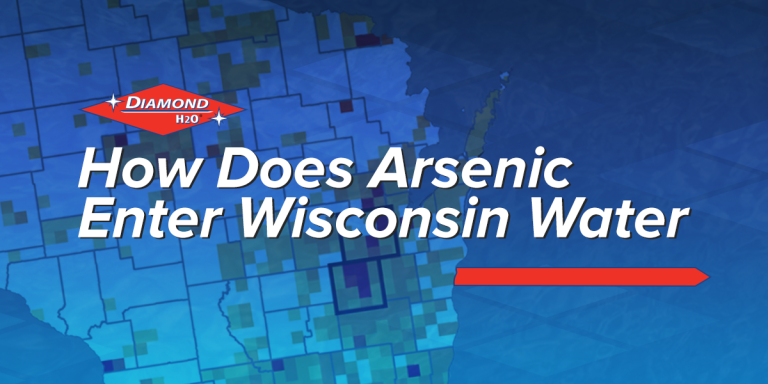Research has shown that long-term exposure to arsenic can cause respiratory issues, cardiovascular disease, and cancers of the skin, bladder, and lungs.
Arsenic naturally occurs in rocks and soil and is also a byproduct of copper smelting, coal burning, and mining. Arsenic was also used as a pest-control and pesticide treatment in the early 20th century.
The Environmental Protection Agency (EPA) lists a dangerous amount of arsenic to be 10 ppb (parts per billion) and above. It’s important to understand how arsenic enters the drinking water and how you can remove it to protect your family.

How Does Arsenic Enter Drinking Water
Arsenic enters the groundwater supply from natural deposits in the earth. Arsenic also enters the water through industrial and agricultural pollution. Unfortunately, once arsenic is released into the environment, it can linger for a very long time.
Arsenic tends to occur in private drinking wells due to certain fertilizers used in the past that contained high levels of arsenic.
How to Test if You Have Arsenic in Your Tap Water
The only way to test if you have arsenic in your tap water is by testing it. You should have your well water tested at least once a year for containments.
If you have concerns about your water, you can have it tested more frequently. Once you know what’s in your water, you can be proactive in removing contaminants.
How to Remove Arsenic
Unfortunately, you cannot remove arsenic from your water through boiling it. This will actually increase the concentration of if arsenic does exist. Traditional chlorine treatment will not remove arsenic either. There are, however, several treatment options for removing arsenic.
Treatment Methods
- reverse osmosis
- ultra-filtration
- distillation
- ion exchange
Learning more about arsenic and the effects it can cause is important to the health of your family. If you are unsure if you are at risk, have your water tested today.
For more information on Wisconsin drinking water, click here to download our ebook The Wisconsin Water Guide

